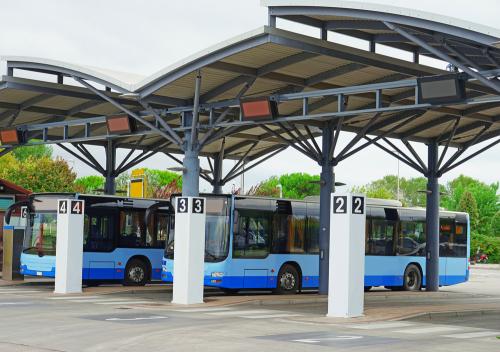Apprenticeship Carolina, which we profile in our recent report, Skills and Innovation Strategies to Strengthen Manufacturing: Lessons From Germany, is one of the fastest-growing apprenticeship programs in the United States. Its success has made it a subject for national media and a model on which Congress’s proposed LEAP Act (Leveraging and Energizing America’s Apprenticeship Programs) is based.
Similar to our recent Q&A with Amy Cell of the Michigan Economic Development Corporation, we asked Brad Neese, Apprenticeship Carolina’s director, to participate in an email discussion about the program and share lessons he’s learned since its launch.
What motivated South Carolina to launch an apprenticeship program?
Apprenticeship Carolina has its origins in a 2003 South Carolina Chamber of Commerce report. That report drew on best practices from other U.S. states and countries and recommended that the state create an apprenticeship program that, at its core, would be a partnership between South Carolina’s businesses and its 16 technical colleges. Apprenticeship Carolina was launched in 2007, and is now currently housed in the SC Technical College System’s Division of Economic Development.
How does the apprenticeship program work? What are the respective roles for students, employers, and technical colleges?
Employers are the central focus of apprenticeship programs. They help to design a program based on their needs. Employers are also the sponsors of apprenticeship programs that are registered with the U.S. Department of Labor. Participating companies provide three core aspects of the program:
- a safe workplace for apprentices to engage in structured on-the-job training
- a qualified mentor to the apprentice
- progressive wages to apprentices as they increase their education and become more productive
Technical colleges in South Carolina are the primary providers of job-related education. In addition to on-the-job training, apprentices must complete at least 144 hours of job-related education. Our technical colleges provide two pathways for job-related education: (1) a traditional associate’s degree or credit-bearing education program, or (2) a noncredit, customized continuing training program. The company works directly with the college to determine the education and training that best fits its needs.
Students are the third party involved. When companies are looking for talent, they often recruit directly from one (or more) of our colleges. Once students become apprentices, they are responsible for completing their prescribed education and exhibiting competency on the job. Any South Carolinian over the age of 16 is eligible to participate.
What was the strategy for engaging all these necessary players to make this successful? How was it sold?
Company participation in apprenticeship has grown in South Carolina by nearly 700 percent since 2007. Each company participating in apprenticeship has had a personal visit from one of our apprenticeship consultants. Our approach to working with organizations, however, is not a typical sales approach. Our consultants do not cold-call businesses. Instead, we have developed an extensive network of key partners who engage companies regularly: all 16 of our technical colleges, workforce investment boards, economic development organizations, and trade associations (among many others). Our approach has been to educate our partners, deploy them to listen to the needs of employers, and then offer apprenticeships as a viable solution for employers with workforce development and training needs.
While it’s still early, what have you learned from the experience of launching and expanding Apprenticeship Carolina? What lessons would you give to other regions and states thinking about launching an apprenticeship program?
Companies come first. The entire process of setting up, registering, and ultimately growing apprenticeship programs should always revolve around the needs of our partner companies. Without companies, we do not have apprentices.
Make it easy. Wherever barriers to development exist, it is our responsibility to remove them for the organization. Apprenticeships are voluntary, so if they are difficult to create or manage they may become less attractive.
Don’t go it alone. Our partners have been crucial to our success. We know that our companies are getting quality education because they partner with our technical colleges. Our local workforce development institutions can help offset the cost of apprenticeships with Workforce Investment Act funding. Our economic development professionals understand that it is necessary for us to commit to assisting companies for their entire life in South Carolina. Our companies recognize the importance of providing quality training and what it means to their bottom line. Effective partnerships are essential to growing apprenticeship.
Be a solution. Our consultants know a little about a lot of things. It is our goal to lend value to our partner companies wherever they need it.
Reduce the financial burden. We are fortunate in South Carolina to have a tax credit that helps to offset the cost of apprenticeships. While this is unique, all states have access to tools like Pell Grants or on-the-job training reimbursements that could be coupled with apprenticeships to reduce the cost.
Over the next couple years, what are you hoping to accomplish as part of Apprenticeship Carolina? How do you think about success?
Apprenticeship Carolina’s overarching goal is 2,000 apprenticeship programs and at least 20,000 apprentices served by 2020. We are currently over halfway there on apprentices (we have served about 12,000) and have an excellent pipeline of companies looking to start apprenticeship programs.
I also see the growth of youth apprenticeships as being important to our future. This approach includes working with 16- and 17-year-olds who are still in high school but are already on a career trajectory. Often these youth apprenticeship programs result in debt-free college credit.
Success to us means that we are meeting the needs of our employers while providing South Carolinians with pathways that lead to good careers.
The Brookings Institution is committed to quality, independence, and impact.
We are supported by a diverse array of funders. In line with our values and policies, each Brookings publication represents the sole views of its author(s).



Commentary
Building one of America’s fastest-growing apprenticeship programs: A Q&A with Brad Neese of Apprenticeship Carolina
April 7, 2015